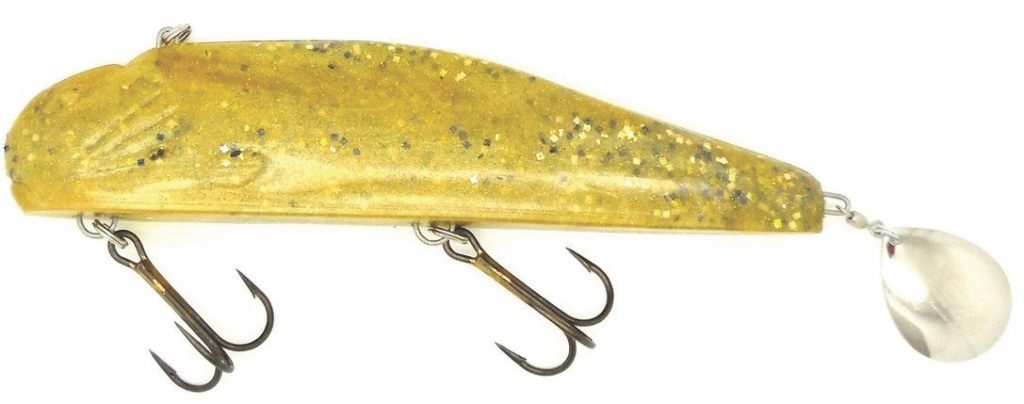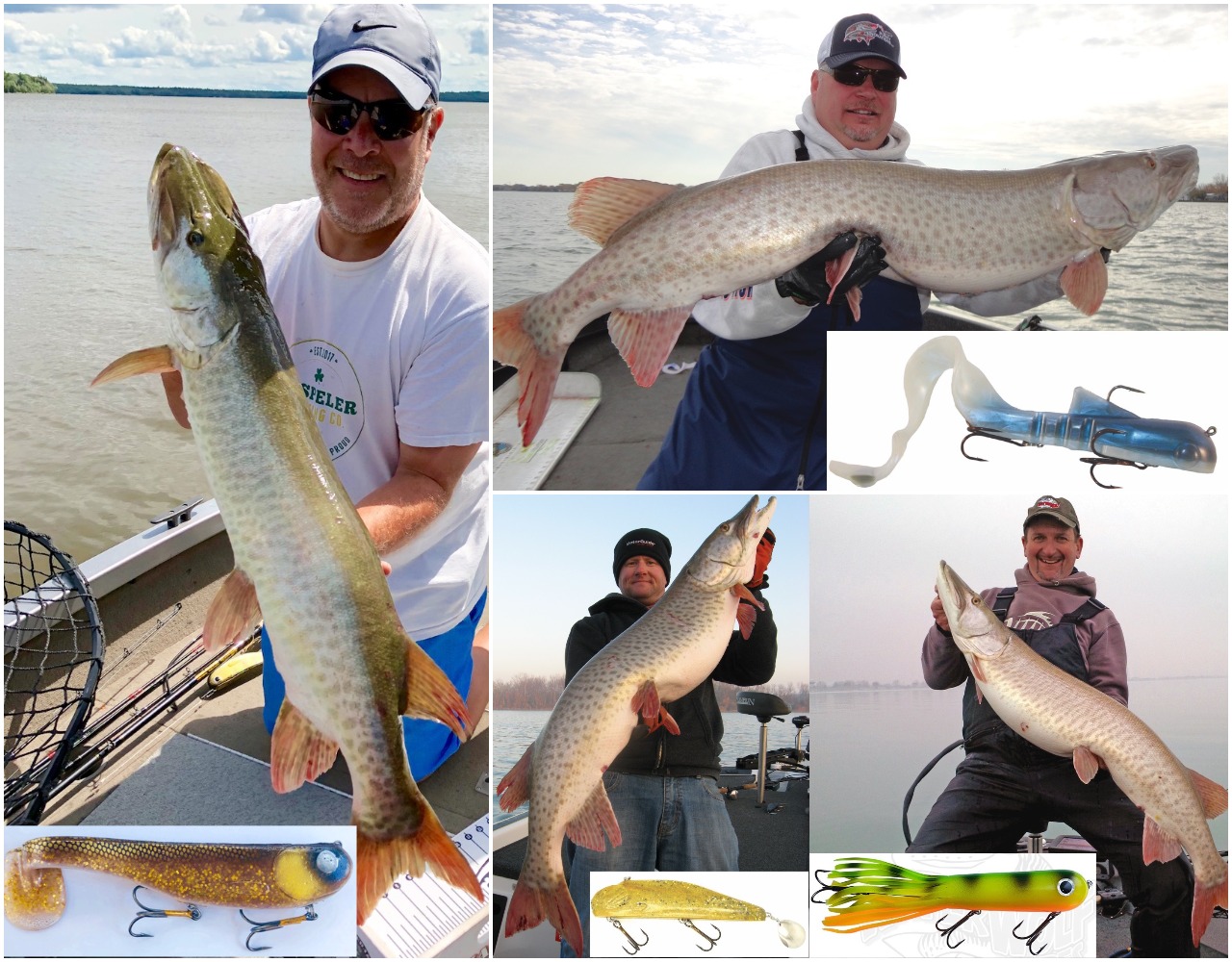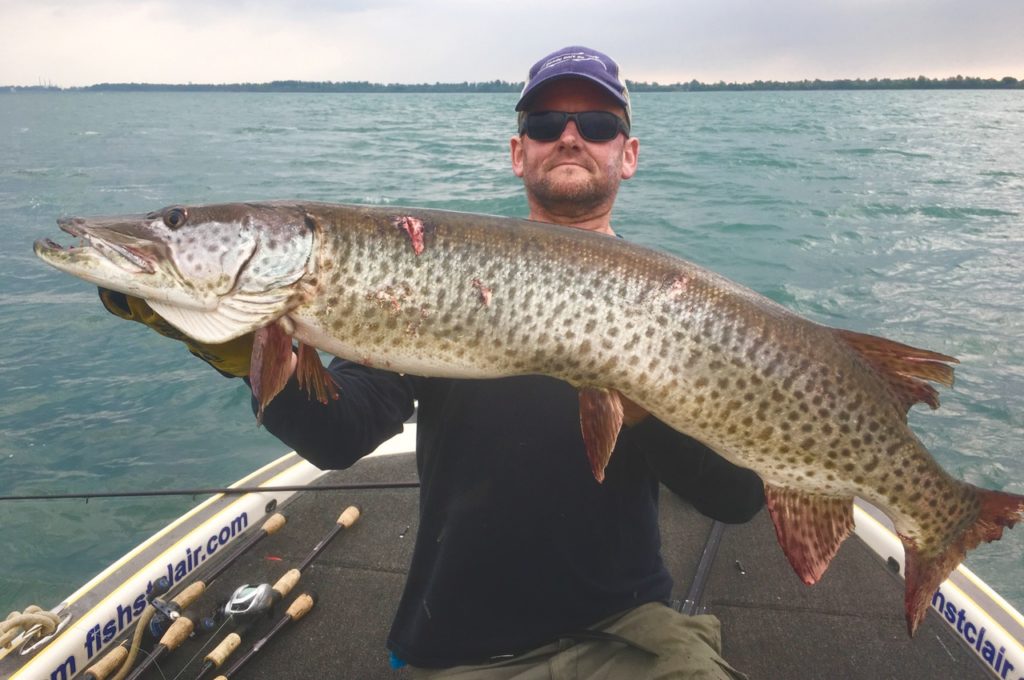Giant slayers
The makers of the top soft-plastics for muskies explain how best to fish them
Advertisement
John Bondy says his perfectly balanced bait always produces
Advertisement
BONDY BAIT
Take one look at Jon Bondy’s like-named Bondy Bait and you will scratch your head and wonder what all the buzz is about. I mean, let’s be honest, the big slab of soft-plastic looks pretty simple. But looks can be deceiving.
I fished with the Windsor-based pro on Lake St. Clair and the Detroit River for 15 hours one autumn a few years back, and our Bondy Baits put 15 fish in the boat, including four behemoths weighing more than 40 pounds. It was the best muskie fishing I’ve ever experienced, and it was no fluke—I saw only one other fish landed among the myriad boats around us. And to think the genesis behind the bait was a hunch.
“When I was guiding clients in June, we tended only to catch average-sized muskies on bucktails, casting in the shallows,” Bondy says. “It was a morning bite and once the sun got brighter, our catch rate slowed significantly. That got me thinking about the muskies we would catch accidentally while jigging for walleye in deeper water.” He reckoned that if they were catching a few muskies on little walleye jigs, they could probably catch a lot more—and bigger—fish on much larger jigs.
Advertisement
To test that theory, Bondy tried vertically jigging saltwater lures. He even added weight to a few muskie-sized soft-plastics, but he would either lose too many fish or the baits would get tangled on his line when he jigged them aggressively. That led him to create the Original Bondy Bait. “It’s a simple design that weighs seven ounces and features a Colorado blade on the tail,” he says. “But it’s balanced perfectly, it never tangles and it works. Anglers have won more than 30 muskie tournaments with it.”

When I fished with Bondy that fall, we scored mightily by vertically jigging the baits on eight-foot, extra-heavy-action muskie rods and levelwind baitcasting reels spooled with 80-pound braid. Our leaders were fashioned from 200-pound stainless steel downrigger cable, and I’ll never forget watching Bondy, vice grips in hand, tighten down the star drags on the reels.
Advertisement
The key to effectively fishing a Bondy Bait is to lift your rod tip from the eight o’clock position to 11 o’clock, pause for a second or two, then let the lure fall back down and pause again. Avoid lifting the lure too high, because the fish tend to hit at either the top or bottom of your jigging stroke. If your rod is pointed straight up when the trophy of a lifetime eats your bait, you’ll be out of position to set the hook.
“If you really want to get good at fishing a Bondy Bait, master using your electronics in deep water,” Bondy advises. “Most people don’t have the patience to spend all day out deep, so if you do, you’ll have a gold mine all to yourself.”
BONUS TIP: LAST CHANCE
Muskies love to follow, so I always assume there’s a fish behind my soft- plastic bait, even if I don’t see one. Then, as the lure approaches the boat, I make a series of quick directional changes by flipping my rod tip from one side to the other. On the final flip, with just a few feet of line remaining between your rod tip and the soft-plastic, the bait will roll onto its side. That’s when a muskie will sometimes appear out of nowhere and clobber it.


